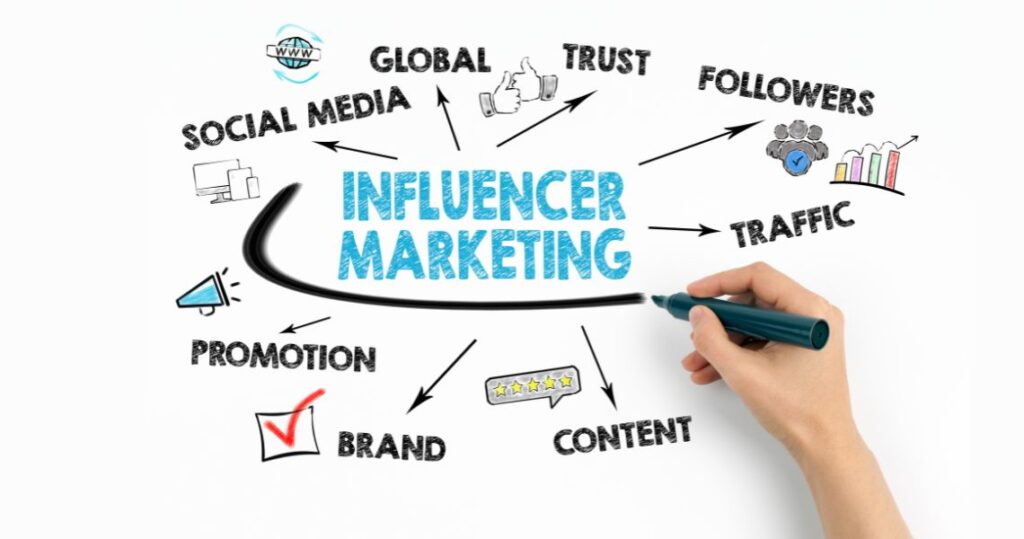In today’s digital age, influencer marketing has become a pivotal strategy for brands aiming to reach their target audience effectively. However, the differences between platforms for influencer marketing can significantly impact the success of a campaign. Understanding these differences is crucial for digital marketers looking to maximize their efforts. This article delves into the nuances of various platforms, helping you make informed decisions for your next campaign.

Understanding the Basics of Influencer Marketing
Influencer marketing involves collaborating with individuals who have a significant online following to promote products or services. These individuals, known as influencers, have the power to sway the purchasing decisions of their audience. But not all platforms are created equal when it comes to influencer marketing.
The Role of Social Media Platforms
Social media platforms play a huge role in influencer marketing. Each platform offers unique benefits and challenges, making it essential for marketers to tailor their strategies accordingly. Let’s explore the major platforms and their distinctive features.
Instagram: The Visual Powerhouse
Instagram is often seen as the go-to platform for influencer marketing due to its visual nature. Brands use Instagram to showcase products through high-quality images and videos, leveraging the platform’s aesthetic appeal. Influencers on Instagram can create visually stunning content that aligns with a brand’s image.
Instagram Stories and Reels
Instagram’s features such as Stories and Reels provide dynamic ways for influencers to engage with their audience. These features allow for short, engaging content that can effectively capture attention and drive engagement.
YouTube: Long-Form Content and Reviews
YouTube is the ideal platform for detailed product reviews and tutorials. Influencers on YouTube often create longer, in-depth content that provides value to viewers, making it perfect for brands looking to educate their audience.
The Power of Vlogs
Video blogs, or vlogs, allow influencers to share personal experiences and stories. This format fosters a deeper connection with viewers, enhancing the authenticity and relatability of the content.
TikTok: Short and Viral Content
TikTok has rapidly gained popularity for its short, viral content. This platform is ideal for brands targeting younger audiences, as it allows for creative and entertaining content that can quickly gain traction.
Challenges and Trends
TikTok’s challenge and trend culture is a unique aspect that brands can leverage. By participating in popular challenges or creating their own, brands can increase their visibility and engagement.
Facebook: Diverse Audience Reach
Facebook offers a wide-ranging audience, making it suitable for brands targeting diverse demographics. Influencers on Facebook can use a mix of posts, live videos, and groups to engage with their followers.
Facebook Ads and Insights
Facebook’s ad capabilities and detailed insights allow brands to refine their strategies and target specific audiences effectively, making it a powerful tool for influencer marketing.
Twitter: Real-Time Engagement
Twitter is known for its real-time engagement and conversational nature. Brands can leverage Twitter for live events, Q&A sessions, and rapid customer interaction.
Hashtags and Trends
Using relevant hashtags and participating in trending conversations can significantly boost a brand’s presence on Twitter, making it a dynamic platform for influencer marketing.
LinkedIn: Professional Networking
LinkedIn is the platform of choice for B2B influencer marketing. It allows brands to connect with industry professionals and share valuable content tailored to a professional audience.
Thought Leadership and Expertise
Influencers on LinkedIn often share industry insights and thought leadership content, positioning themselves as experts in their fields and attracting a professional audience.
Choosing the Right Platform for Your Campaign
Selecting the right platform depends on your brand’s goals and target audience. Consider the nature of your product, the demographic you want to reach, and the type of content you plan to create.
Aligning Platform Features with Campaign Objectives
Ensure that the platform’s features align with your campaign objectives. For example, if you’re aiming for quick engagement, TikTok may be the best fit, whereas LinkedIn is better suited for professional networking.
Integrating Multiple Platforms
Combining multiple platforms can enhance your campaign’s reach and effectiveness. By leveraging the strengths of each platform, you can create a cohesive and comprehensive strategy.
Cross-Platform Strategies
Develop cross-platform strategies that allow content to be repurposed and shared across different channels, maximizing exposure and engagement.
Measuring Success in Influencer Marketing
To gauge the success of your influencer marketing campaigns, it’s essential to measure key metrics such as engagement rates, reach, and conversions. Each platform offers different analytical tools to track these metrics effectively.
Adapting Strategies Based on Insights
Use the insights gained from these metrics to adapt and optimize your strategies. Continuous learning and adjustment are key to achieving long-term success in influencer marketing.
Conclusion
Understanding the differences between platforms for influencer marketing is crucial for digital marketers aiming to craft effective campaigns. By leveraging the unique strengths of each platform, brands can enhance their reach and engagement, ultimately achieving their marketing objectives.

FAQs
What is the best platform for influencer marketing?
The best platform depends on your target audience and campaign goals. Instagram is great for visual content, while YouTube is ideal for detailed reviews.
How can I measure the success of my influencer marketing campaign?
Success can be measured through metrics such as engagement rates, reach, and conversions. Platforms like Instagram and Facebook offer detailed insights.
Is it beneficial to use multiple platforms for a single campaign?
Yes, integrating multiple platforms can enhance your campaign’s reach and effectiveness by leveraging the unique strengths of each platform.
For more insights on influencer marketing, check out this article on the power of influencer marketing.
Additionally, explore our resources on future of influencer marketing and why influencer marketing is important for more comprehensive insights.






